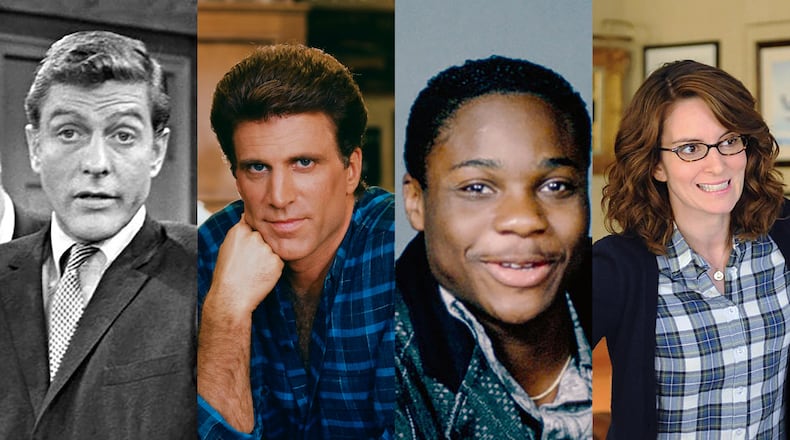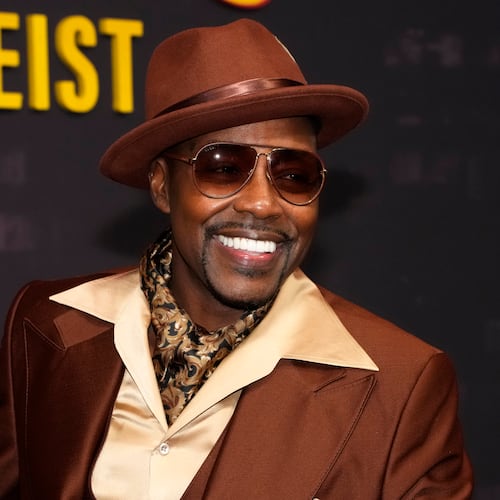Of all genres created for TV, the sitcom is arguably the most enduring. It’s the one that made Lucille Ball, Dick Van Dyke and Bob Newhart household names for generations. It’s the genre that made Jerry Seinfeld not just rich, but insanely rich. It’s the genre that usually generates the most minutes eaten up on various streaming services any given week.
Credit: AP
Credit: AP
Over eight episodes, CNN’s “History of the Sitcom” explores the genre through multiple lenses, including themes of family and sex on Sunday night’s first two episodes. Later shows explore topics like race, friendship, the workplace and class. It debuts at 9 p.m. Sunday with back-to-back episodes.
The series uses the same team — executive producer John Ealer and former New York Times media writer Bill Carter — that recently created CNN’s six-part “The Story of Late Night.”
Ealer said there are three obvious draws for people to watch “History of the Sitcom”: the nostalgia factor, seeing some key famous sitcom figures pontificate, and the sitcom’s connection to the history of America over the past seven decades.
They first had to first decide how to define a sitcom, which originally was three cameras on a soundstage before a live studio audience and a laugh track. But in recent years, comedies such as “The Office” and “Modern Family” dispensed with the laugh track and audience.
Credit: NBC, Justin Lubin
Credit: NBC, Justin Lubin
“We created a sniff test,” Ealer said. “Does it feel like a sitcom? ‘Insecure’ is not the same as ‘The Mary Tyler Moore Show.’ Yet they both represent how comedy opened up the viewpoints of Americans in profoundly funny ways.”
Carter noted that “M*A*S*H” was considered a groundbreaking comedy despite heavy doses of drama. “If you started to eliminate shows because they had a lot of drama, you’d get rid of a lot of great comedy,” he said.
“History of the Sitcom” began production just before the pandemic and used the rest of the year to interview a whopping 184 people for the series, including some of the biggest living luminaries of the sitcom world, from Ted Danson to Tina Fey.
“What I found remarkable,” Carter said, “was how interested people were in talking about it. They were enthused to do it. We didn’t twist arms much.”
Ealer said they strategically began lining up interviews of the older luminaries first and fortunately did so right before the pandemic.
“We went after the icons in their 80s and 90s,” Ealer said. “For a magical three-week period in February 2020, we interviewed Norman Lear (creator of “All in the Family,” “The Jeffersons” and other classics), Carl Reiner (”The Dick Van Dyke Show”), Mel Brooks (”Your Show of Shows”), Dick Van Dyke, Barbara Eden (”I Dream of Jeannie”), Dawn Wells (”Gilligan’s Island”) and Bob Newhart.”
Credit: Dan Steinberg
Credit: Dan Steinberg
“What was remarkable was how sharp they were,” Carter said.
Lear even helped them come up with some visual gems, including clips of two pilots of “All in the Family” that ABC rejected before CBS finally picked the sitcom up in 1971. “Lear is 98 years old. He brought up specific details about specific shows and told stories brilliantly,” Ealer said.
Calling himself the “creative engineer” of the series, Ealer had to weave hundreds of hours of interviews and classic clips into eight coherent hour-long episodes. He and his staff compiled a database of 3,000 names of key people in sitcom history. “We could call up a name of a writer from ‘The Dick Van Dyke Show’ and see what else they did and make sure things didn’t fall through the cracks,” he said.
Credit: AP
Credit: AP
Picking key moments from various shows also reminded Carter how genuinely funny some were, even decades later. They play a clip of Archie Bunker (Carroll O’Connor) from “All in the Family” arguing with his son Mike Stivic (Rob Reiner) over minorities seeking better opportunities. Bunker griped, “I didn’t have no million people marchin’ and protestin’ to get me my job.” His wife Edith Bunker (Jean Stapleton) added: “No, his uncle got it for him.”
“That’s just a phenomenal piece of comedy writing and delivery,” Carter said. “You can watch that 50 times and you’ll still laugh.”
Editing proved challenging. For the classic “WKRP in Cincinnati” episode where the station manager thought it was a good idea to throw turkeys out of a helicopter for a Thanksgiving Day stunt, “we were lucky to have three icons from the show — Loni Anderson, Howard Hesseman and Tim Reed — do interviews with us. How do you boil that down to 30 seconds and still give it the justice of the impact it had on a generation of TV viewers?” Ealer said.
Credit: ASSOCIATED PRESS
Credit: ASSOCIATED PRESS
CNN provided the producers a lot of leeway to air slurs against gay people and Black people the sitcoms used on network TV in the 1970s. The series also aired some racy moments from shows like HBO’s “Sex and the City” and Amazon Prime’s “Fleabag.” (CNN will provide proper disclaimers before the episodes air.)
Carter said the episode focused on race had the most trenchant moments: “It’s remarkable to think that the first use of the n-word we came upon was ‘Sanford & Son’ by Redd Foxx in the early 1970s,” he said. “To put it on television today has so much more resonance. If you are going to talk about it, you have to show what was said and why. That episode has an awful lot of deep stuff. CNN was good with that.”
ON TV
“History of the Sitcom,” 9 p.m. Sundays, CNN
About the Author
Keep Reading
The Latest
Featured










